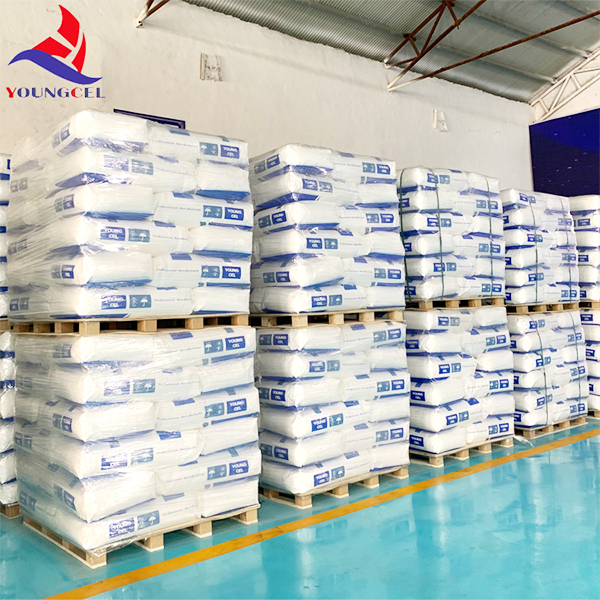The Role of Cellulose Ether in Wall Putty Enhancing Performance and Quality
Wall putty, a critical component in surface preparation and finishing in the construction industry, plays a vital role in ensuring the durability and aesthetics of interior and exterior walls. One of the key ingredients that significantly enhances the properties of wall putty is cellulose ether. This versatile compound not only improves workability but also contributes to the performance characteristics of wall putty, making it an essential component in modern formulations.
What is Cellulose Ether?
Cellulose ether is a derivative of cellulose, a natural polymer obtained from plant cell walls. Through chemical modification, cellulose is transformed into various ether forms, such as methylcellulose, hydroxypropyl methylcellulose, and carboxymethyl cellulose. These derivatives are water-soluble and possess unique properties that make them ideal for use in construction materials, particularly in wall putty.
Enhancing Workability and Application
One of the primary functions of cellulose ether in wall putty is to improve its workability. The addition of cellulose ether increases the viscosity of the mixture, allowing for better adhesion between the putty and the substrate. This enhanced viscosity means that the putty can be applied more easily with tools such as trowels and putty knives, resulting in smoother finishes and reduced labor time.
Moreover, cellulose ether provides a longer open time during application. This is the period in which the putty remains workable before it begins to set. A longer open time allows applicators to spread the putty more efficiently and make necessary adjustments without rushing, ultimately leading to a higher quality finish.
Water Retention and Drying Properties
Cellulose ether significantly improves the water retention properties of wall putty. The presence of cellulose ether helps to retain moisture within the putty during the drying process. This is crucial as it prevents the putty from drying too quickly, which can lead to cracking, peeling, or a poor surface finish. By ensuring a gradual and uniform drying process, cellulose ether contributes to the durability and integrity of the cured putty.
cellulose ether for wall putty

Furthermore, improved water retention helps in achieving a better bond between the putty and the wall surface. This is particularly important in humid environments where rapid drying can compromise adhesion.
Resistance to Shrinkage and Cracking
Another significant advantage of incorporating cellulose ether into wall putty formulations is its ability to reduce shrinkage and cracking. As the putty dries, traditional formulations may experience volume loss, leading to shrinkage cracks. However, the thickening properties of cellulose ether help maintain the structure of the putty, minimizing this shrinkage.
This characteristic is especially beneficial in areas with fluctuating temperatures and humidity levels, where the potential for expansion and contraction may cause traditional putties to crack. By utilizing cellulose ether, manufacturers can produce more resilient and flexible formulations that withstand these environmental stresses.
Environmentally Friendly and Economical
In addition to its functional benefits, cellulose ether is derived from natural sources, making it an environmentally friendly choice for construction materials. Its biodegradability and low toxicity levels ensure that it participates positively in sustainable building practices. Moreover, the use of cellulose ether can also lead to cost savings for builders and contractors. By improving the workability and performance of wall putty, less material is wasted during application, and the need for additional finishing coats may be reduced.
Conclusion
The inclusion of cellulose ether in wall putty formulations represents a significant advancement in construction technology. Its benefits—ranging from improved workability and water retention to enhanced resistance to shrinkage and cracking—make it an indispensable ingredient for high-quality wall putty. As the construction industry continues to evolve, the use of cellulose ether not only addresses the demands of modern building practices but also aligns with sustainable material usage. For contractors, builders, and architects, leveraging the advantages of cellulose ether in wall putty can ensure superior results and greater satisfaction in their projects.
-
Rdp Powder: Key Considerations for Wholesalers in the Building Materials IndustryNewsJul.08,2025
-
Key Considerations for Wholesalers: Navigating the World of Hpmc - Based ProductsNewsJul.08,2025
-
Hpmc Detergent: Key Considerations for WholesalersNewsJul.08,2025
-
Key Considerations for Wholesalers: China Hpmc For Tile Adhesive, Coating Additives, Concrete Additives, and MoreNewsJul.08,2025
-
Crucial Considerations for Wholesalers: Navigating the World of Construction MaterialsNewsJul.08,2025
-
Key Considerations for Wholesalers Sourcing Additive For Cement, Additive For Concrete, Additive For Putty from Additive Manufacturer Shijiazhuang Gaocheng District Yongfeng Cellulose Co., Ltd.NewsJul.08,2025




